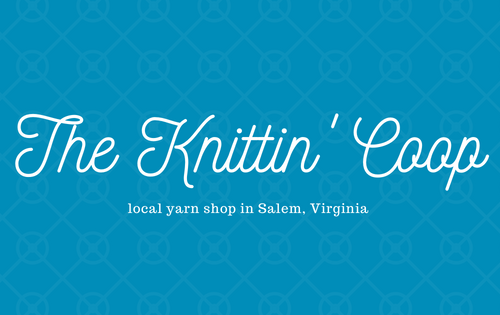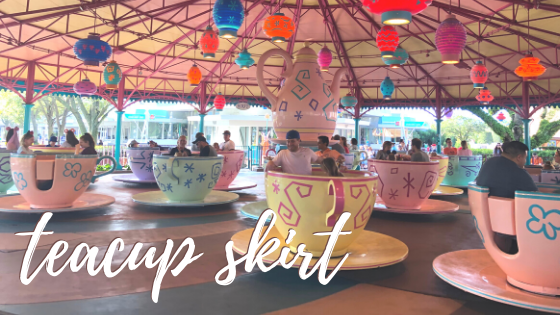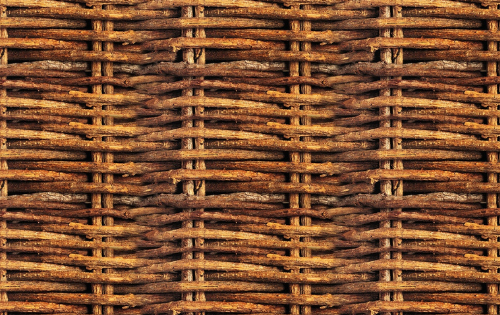Knit Your Own Gradient Blanket
Gradient blankets are a fun way to turn documentation into a craft. The results are beautifully unpredictable.
You’re probably familiar with the most common form of gradient blanket: the temperature blanket or tempghan. Each day for one year, you work one row of a blanket. The color palette is fixed, but each day’s color is determined by the high temperature.
Not all gradient blankets have to follow temperature, though. Why not make one that helps you stay on track in another area of your life? Accountability through crafting!
Choosing Data for a Gradient Blanket
Most temperature blankets are worked through an entire year, January 1st through December 31st, and reflect the temperature at your home. This plan pairs nicely with a New Year’s Resolution to knit or crochet daily or to practice a new stitch.
What if you find tracking the weather to be a bit boring? (SO boring!)
Then find the data that is important to you and work with that.
If you’re determined to stay on top of your mental health, consider mood tracking with a gradient blanket. Each day, knit or crochet a row that reflects how you felt throughout most of the day.
Work out a chart like this, listing out each possibility. The colors will come later.
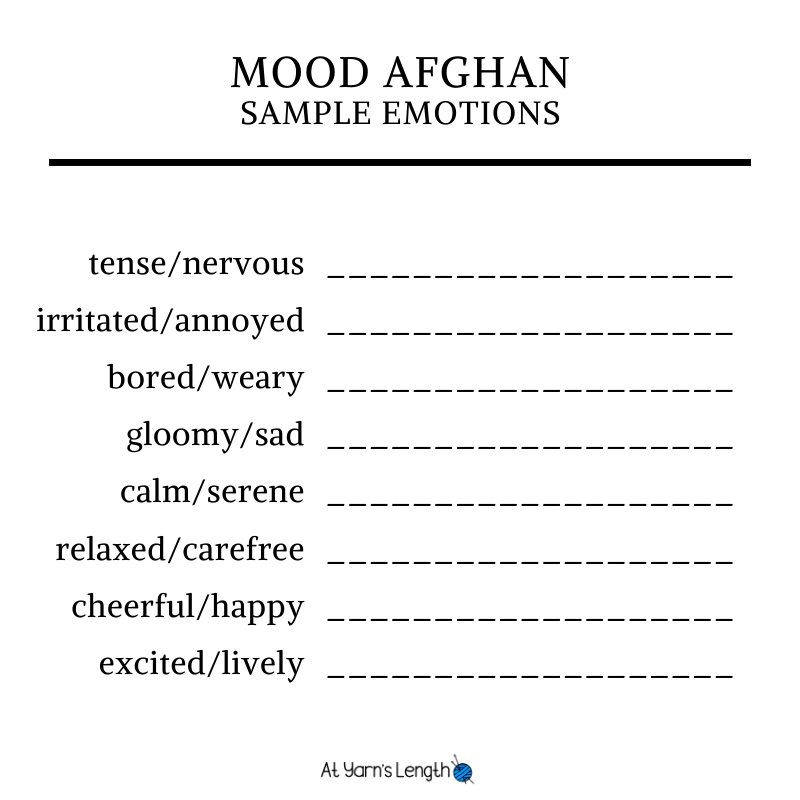
Perhaps you have a goal is related to daily exercise. Use data based on your active minutes, steps walked, calories burned, or miles run each day.
Whether it is minutes spent reading, dollars saved, cigarettes not smoked, hours slept, or weight lost, you can craft an afghan to reflect your annual progress or track your habits.
Choosing Colors for a Gradient Blanket
After you’ve spent a few minutes reflecting on your annual goal, make a selection and choose colors to fit.
Your data will inform the number of colors you use. Think about logical breaks in data (more on that later) as you are thinking about what colors make sense for your goals.
Four colors is probably the bare minimum for this type of project and the upper limit of what would be reasonable would top out around a dozen. My preference is to use eight colors, which is plenty to manage and provides intriguing combinations.
Classic Rainbow
The classic temperature blanket color scheme uses colors from a simple, bold rainbow that can be adapted to any data. The benefit to this color scheme is that it is logical; you can easily see understand large changes and how they relate to the days before and after.
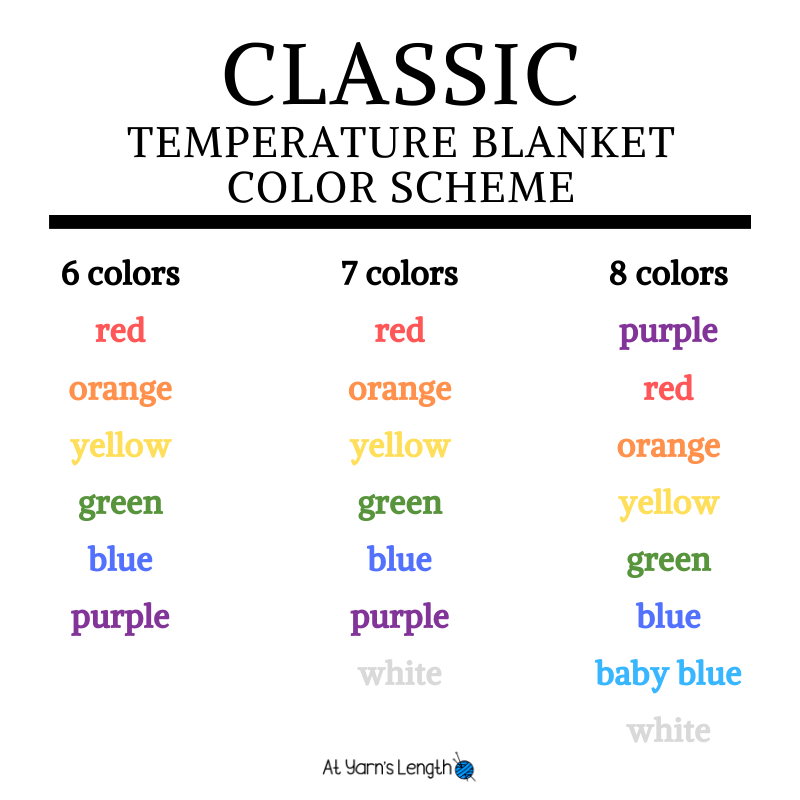
If you’re tracking moods, you may already find you have a color association for many of them. This color scheme makes sense for this type of tracking.
Single Hue
The single-hue color scheme uses shades of the same color for a broken gradient effect. Several purples, for example, make up the entire year. The benefit to this color scheme is that it can be matched to favorite colors or home decor. It blends in nicely. While the stripes will still be random, they’ll be more likely to blend.
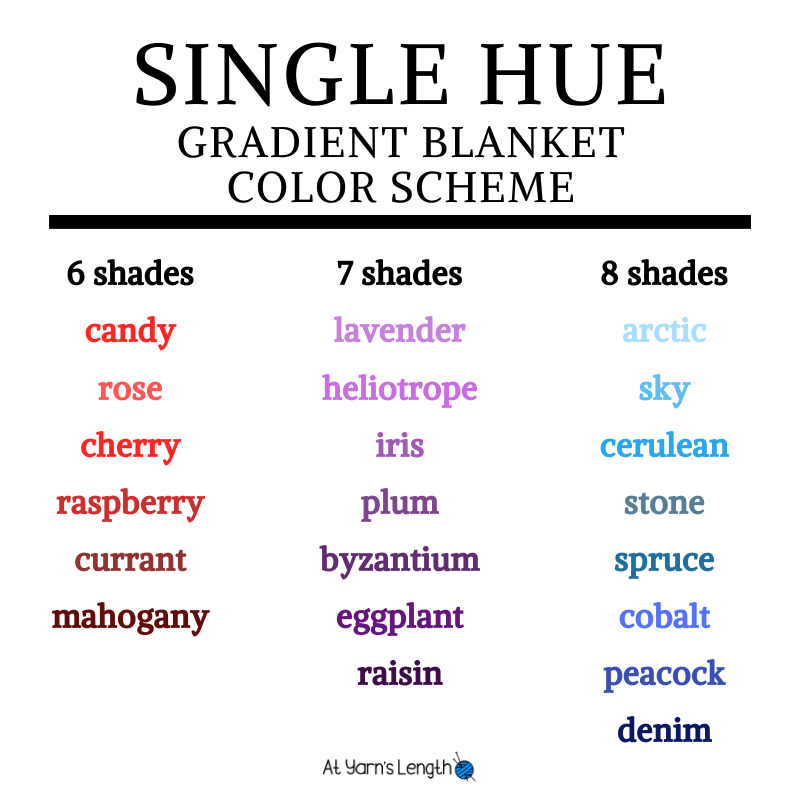
Does a particular color fit your goal? For something like tracking daily water intake, a single-hue color scheme in blue would be perfect!
Complementary Colors
You can also use any other color scheme you’d like. Many yarns are sold in sets, fades, or bundles that marry complementary colors.
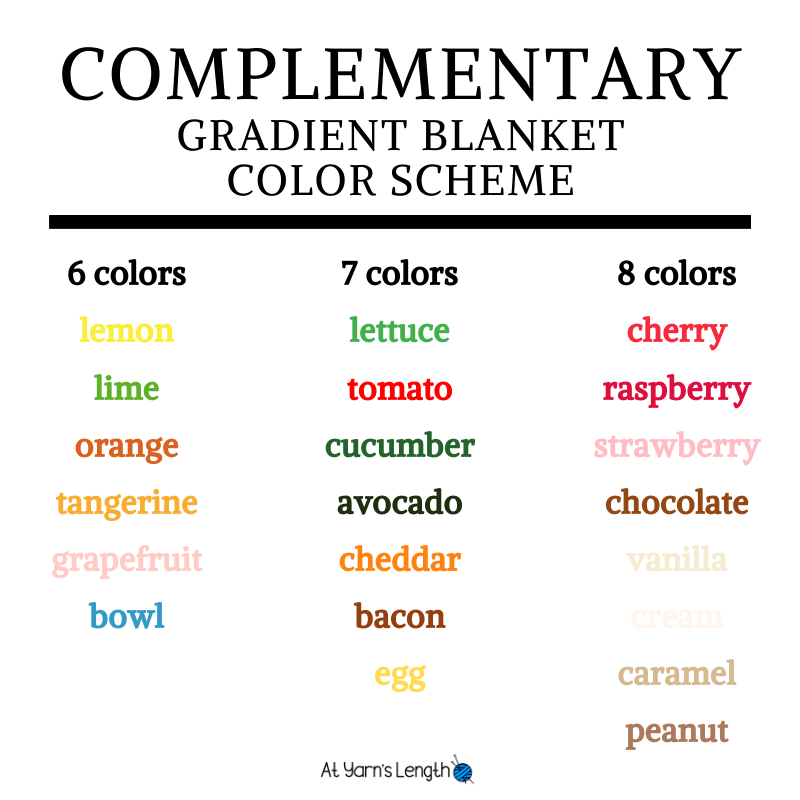
If you have a goal like eating more vegetables, a color scheme that utilizes the colors of those foods could be a logical way to mark your progress.
Choosing the Data Range for a Gradient Blanket
Range is simple for mood tracking. The number of emotions matches the number of colors.
If you’re using an objectively measured goal, it gets a bit more complex.
Let’s look at how it’s done for the classic temperature blanket. You take the predicted weather for the year (in degrees), evenly divide that range by the number of colors you want to use, and then assign your colors.
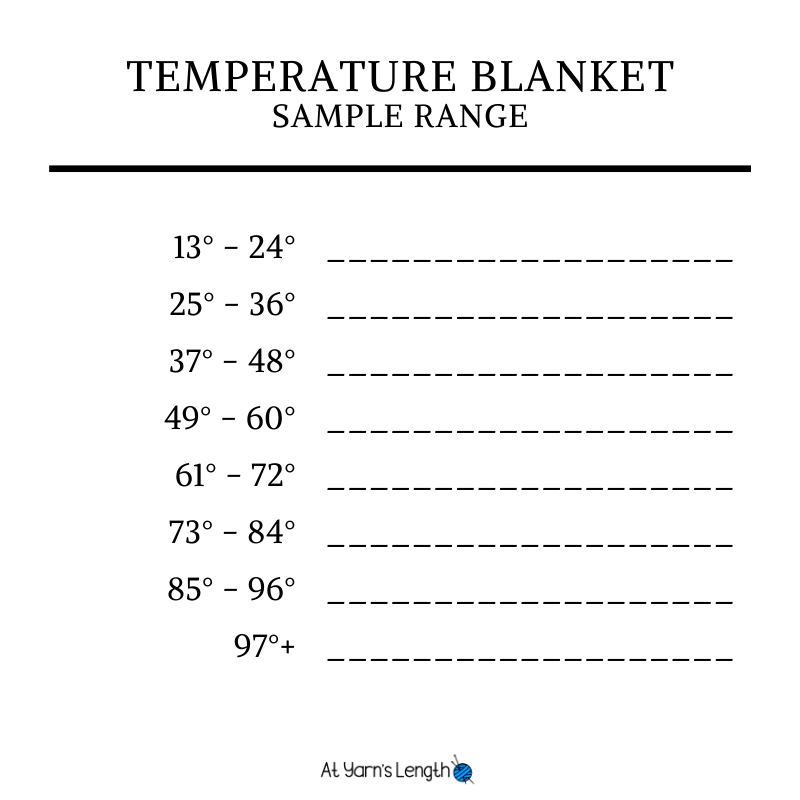
Let’s plan using water intake and the familiar goal of “8 glasses per day.” A glass is 8 ounces of water, so the daily goal can also be expressed as 64 ounces.
In this case, you’d want a color for every 8 ounces:
0 – 8 ounces
9 – 16 ounces
17 – 24 ounces
25 – 32 ounces
33 – 40 ounces
41 – 48 ounces
49 – 56 ounces
57 – 64 ounces
You may also consider an additional category for exceeding your goal:
65+ ounces
For this range, you’ll need a minimum of 8 colors. You’ll need 9 if you choose to include an “exceeds” range.
But what if your favorite water bottle holds 20 ounces? Adjust the ranges to fit your habits and goals:
0 – 20 ounces
21 – 40 ounces
41 – 60 ounces
61 – 80 ounces
For this range, you’ll need only 4 colors.
With this in mind, take some time to work out exactly how you want your blanket to be crafted.
Estimating How Much Yarn You’ll Need
A worsted weight throw requires about 1600 yards of yarn, which should give you a good idea of the total amount needed. Color by color, though, it gets trickier.
I recommend choosing a popular yarn in widely available colorways and only purchasing one skein per color to start. As your blanket grows, you can pick up additional skeins. Don’t worry too much about dye lot as most of the rows are separated by other colors.
I know other crafters who recommend purchasing as much upfront as possible. I find this too daunting as the project has so many variables, but if this is your plan, there’s a simple calculation to help. Divide the total yardage by the number of colors and purchase that amount of each yarn. (For example, a project using 1600 yards of yarn and 4 colors would require 400 yards of each color.) Note that this assumes consistent use of each color, which is not likely.
Stitch Options
The simplest stitches are usually the best for this type of project as they showcase stripes. Stockinette would be lovely, though you’ll definitely need to add a border or work the first and last few stitches of each row in garter stitch to prevent curling.
If you choose garter stitch, the stitches are shorter than stockinette. You may want to knit two rows to help compensate for the loss of length or decide that you are working your blanket from side to side (rather than top to bottom).
Determining Cast-On
A reasonable size for an afghan is 50″ in width.
To determine how many stitches you’ll need to cast on, use your yarn’s label as a guide. Your swatch, if you use them, should be the true measurement.
Multiply the desired width (in inches) by the number of stitches per inch:
4 stitches per inch: CO 200
5 stitches per inch: CO 250
6 stitches per inch: CO 300
7 stitches per inch: CO 350
To determine the approximate length, return to the label or your swatch.
Divide 365 by the number of rows per inch:
4 rows per inch: 91″ long
5 rows per inch: 73″ long
6 rows per inch: 61″ long
7 rows per inch: 52″ long
Update: For crochet, I’m told that chaining 150 and working in single crochet with a K hook would result in a comparably sized throw. I’m also told working C2C results in a beautiful blanket!
A Few Tips
Work weekly. There’s no rule that says you have to complete one stripe per day. It can even be easier to find time for one extended session and work through a week’s worth of data at a time. Just remember to keep track!
Work in the ends as you go. This project utilizes data from 365 days (yes, sometimes 366!) to create 365 stripes. This could mean that you have 365 ends to weave in! Don’t wait until the last day or this task will seem overwhelming. Instead, wait for a confirmed change in color and then weave in yesterday’s ends.
Work historically. If the idea of a project that takes a year to complete seems maddening, work with historical data and create an afghan on your own time frame. Unless you’re a habitual tracker of minutiae, you will probably need to rely on a third party for the data, but there are still ways to make it personal, like creating a temperature blanket for the first year of your child’s life.
Have you ever made a temperature blanket or other gradient blanket?


